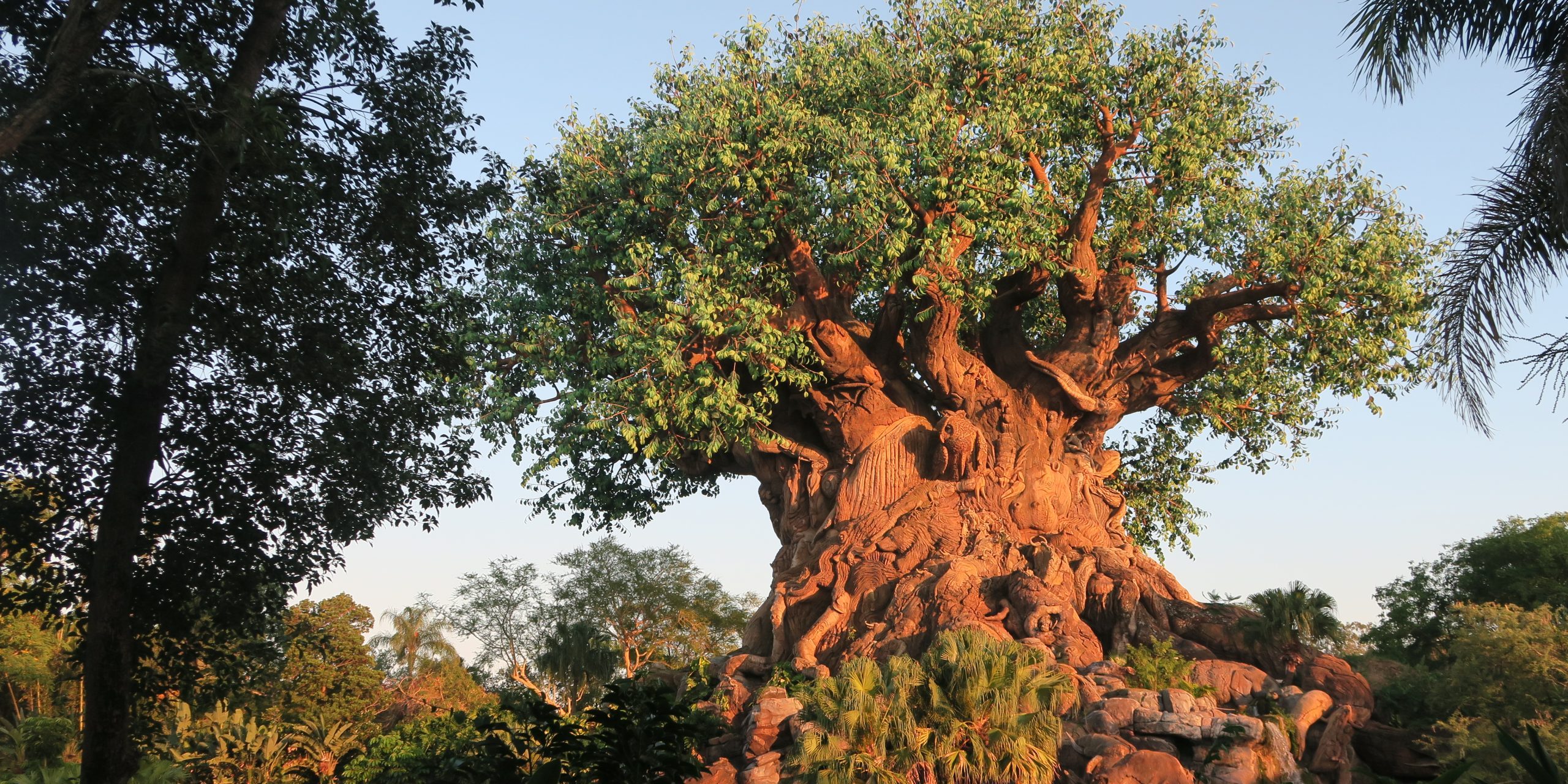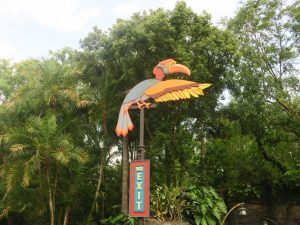Part 1: This is Animal Kingdom.
In mid March of 2020, Imagineer and village elder of the Animal Kingdom Tribe, began a series of posts on Instagram which took his followers on a tour words and pictures tour of Walt Disney World’s Fourth Park. Joe is an artistic and intellectual guy who shares his passion for visual storytelling through social media in a really accessible way, and helped allot of us occupy our minds through a very difficult time in modern history.
This series of posts, which ended on Earth Day, 22 April, have been recommended and partially shared across the web. I came across them a little late, I must admit, but that allowed me to binge read them, and as I did, I felt I needed to make sure they didn’t get lost in the back spaces of Joe’s ever expanding Instagram feed. The whole thing is a goldmine for fans and creative people in general, to grab a pick and get mining.
So in August, not wanting to just poach his stuff, I asked Joe on Twitter about wether he’d mind me transcribing the whole lot and posting it on the YTT website. He’s a really busy guy, and he gets asked hundreds of things a day, but to my great excitement he responded positively. Not only positively but in a very effusive and excited way …
And with that it is Disney YTT’s pleasure to present Joe Rohde’s Animal Kingdom.
The Tree.
Well it doesn’t look like we’ll be meeting up at Disney’s Animal Kingdom real soon so how about a tour of my personal photos of the park. [Go to Joe’s Instagram to see his photos. https://instagram.com/joerohde?igshid=95w6ma0f8bg3 ] If you haven’t been to the park, or ever heard of it (which is definitely a thing on the West Coast) perhaps this will help people understand what it is. Maybe even convince some sceptics to try it out. If you have even been there, it might just be more inside knowledge. So in the middle of the park is the centrepiece 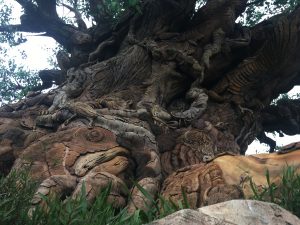 and icon. The Tree of Life. Named for the old fashioned 19th century diagram of interconnected spread of life. Because the park is dedicated to the themes of animals and their relationships with humans, (good and bad) we needed a non-architectural icon…something “natural.” Since nature is everywhere anyway, we also need to signify that this place is exceptional…in some way “magical.” Thus…a strange tree.
and icon. The Tree of Life. Named for the old fashioned 19th century diagram of interconnected spread of life. Because the park is dedicated to the themes of animals and their relationships with humans, (good and bad) we needed a non-architectural icon…something “natural.” Since nature is everywhere anyway, we also need to signify that this place is exceptional…in some way “magical.” Thus…a strange tree.
A tree whose body disappears under patient observation to become nothing but animals. A metaphor for the rewards nature can provide to the careful observer. But since we all know it has been made… it is a work of art …it also signifies the intent communicate…to tell story. In fact the Tree promises two things. 1. This place is a story place about animals. 2. This place is a designed place full of virtuoso accomplishments. (See Aristotle’s essay on Mimesis.)*
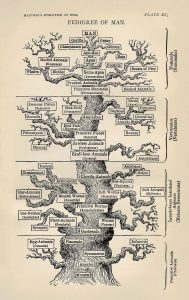
We think this is the Victorian tree Joe is talking about.
Let’s stay with the Tree for a moment. If you pay attention to most of Disney’s Animal Kingdom you’ll see that when you come up on animals, it’s usually in the context of some story. In Africa that story ultimately reflects upon the question of resources, like ivory and rhino horn. Asia is chiefly concerned with habitat loss and habitat use and how animals and humans can live side by side. Pandora with pollution.
So what is going on in front of the Tree? When we originally chose animals just around the Tree, we chose them for their physical diversity, as demonstrations of the vast differences in shape as animals adapt to various ecosystems. Kangaroos, porcupines, flamingos, macaws. Each of these animals has strikingly unique adaptations. A marsupial deer with the body of a giant hare. A rodent with really pokey hair. A bird with an upside down mouth. A giant parrot with nutcracker jaws. Something is at work here. A principle of life.
These are observations that can be made but are not required. Because this is not an educational facility per se, we want people to pursue ideas at their own pace. As they might do in nature. My two boys go walk[ing] in the nearby mountains … they noticed a number of red salamanders in the streams. That’s because they were paying attention, and so they noticed. I’m sure others walked right by. Animal Kingdom is a bit like that. It’s there for you with a lot of meaning, a lot of meaning, and a lot of research-based accuracy. You just have to look and ask.
The Road Less Travelled.
… We are going back up for a second to the entry of the park, which we called the Oasis Gardens. What is going on here. There is, in a certain sense … Nothing there. First, you have to recall that when we opened the park, there was no other theme park like it. That’s creatively interesting and all, but what about guests? How do they know what to expect? So … our first question was “How do we signify to you that this park is not like other parks?” We needed to reset expectations otherwise the entire day would be one big frustration. That can’t be just signs and labels because A. Show don’t tell. B. “Nobody reads.” The first thing you notice is not a presence, but an absence. What is not there is a human-based urban, architectural environment. Instead there is a forest with two paths. Not to put too fine a point on the Robert Frostiness** of this, but of course, we want you to take the path less traveled by, because that will make all the difference. Having more than one path is a simple metaphor for adventure … Even if nothing happens on the path you take … There’s always the mystery of the other path. Now that the park is established the value of this opening statement isn’t quite what it used to be … it was quite a shock when it opened. Now it’s just the opening of the park. To be honest, the economic pressures of a day in the park make it very hard for people to slow down and pay attention here, which is a shame. Because it’s a beautiful, beautiful environment full of little secret surprises … And there are cool animals, here and there. You cannot believe the number of versions of a park entry sequence we went though before we landed this one. Everything from empty zoo cages with their doors standing open, to a kind of 1960’s organic hobbitish village trail. But this forest does the job. You are in a place about nature, and the priorities of nature … So it must be about you too.
 Discovery Island.
Discovery Island.
Discovery Village, in the centre of the park, is basically an architectural revisitation of the same themes expressed by the Tree of Life in its centre. The beauty, diversity, the importance of animals, only this time instead of being expressed as a natural object, the same idea is expressed as art on the surface of the buildings and around them. The buildings are not from any particular region, but are reminiscent of tropical architecture around the world. I know allot of people spend time looking at the animals on the tree … but I bet far fewer people two the time to look at all the animals on the buildings, both inside and outside. I can’t guarantee this, but there’s probably more. And if you pay close attention, there are these very subtle groupings to the design. Animals who migrate. Animals who eat each other. Animals who disguise themselves. The murals inside pizzafari have pretty obvious underlying themes. In this case, rather than tell you exactly what, I think it would be interesting, when the park reopens, to go check and see what the groupings might be. Geographically speaking. The island in the centre of the park is neutral. It isn’t a somewhere … like Asia, Africa or Dinoland or Pandora. Rather than representing a place it represents an idea … And from there we depart to other realities.
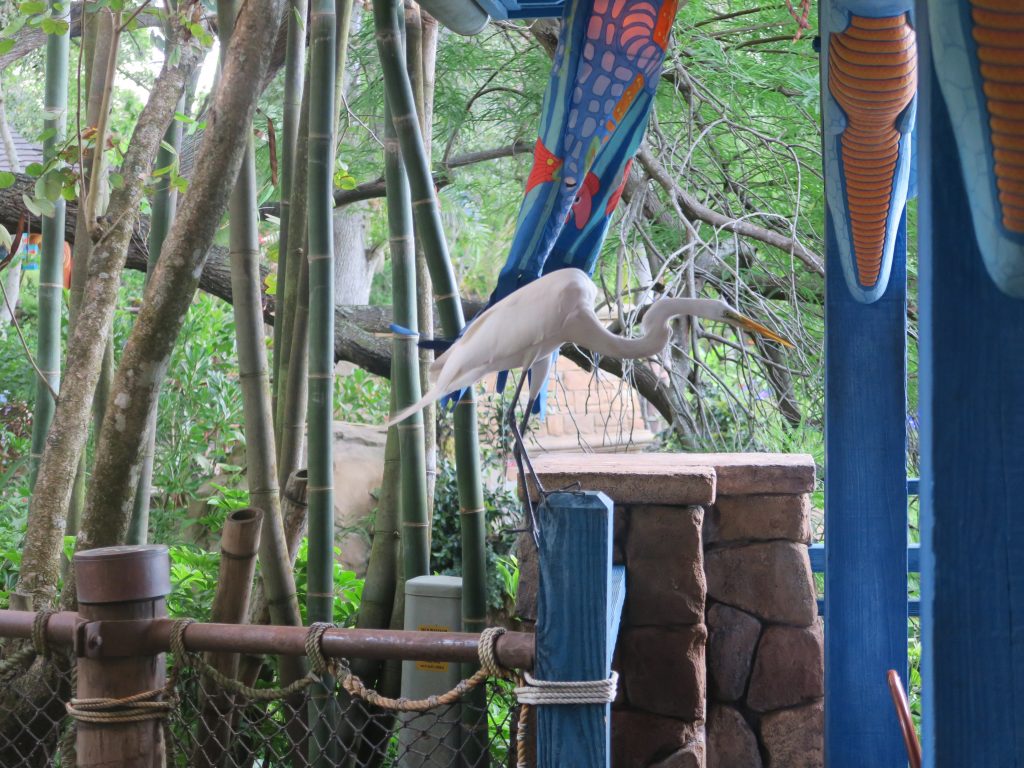 The Dining Gardens.
The Dining Gardens.
We cannot leave the middle of the park without reflecting on one of my favourite places, the dining gardens of Flame Tree Barbecue. These have a very weird origin. Early in design of the park there was a shuffle of programming. The Tree originally had a restaurant under it with a view of the river. The Flame Tree location was an amphitheater. We decided to put a bigger show under the Tree so we abandoned the amphitheatre and moved the restaurant to the amphitheatre location. Because this happened after our landscape design was pretty well defined, we had to fit the restaurant into the amphitheatre shape. That could have been a design problem, but it ended up creating a really beautiful space. It’s loosely inspired by some of the places we visited in Bali … little pavilions surrounding a reflecting pond. I do think that powerful emotions can be encoded in pure form and somehow this arrangement of buildings, water, trees, and sculptures evokes similar feelings of serenity and gentleness as a real Balinese garden. The architectural ornamentation is inspired by colourful folk art, mainly Oaxacan carvings***, Peruvian Moche ceramics****, and American folk art carvings … not Balinese at all. But the ensemble works somehow to make a very restful meditative space. If you haven’t hung out there it’s worth a visit, obviously right in the middle of lunchtime it’s busy, but in off hours you could be all alone there.
* Encyclopaedia Brittanica : ‘Mimesis, basic theoretical principle in the creation of art. The word is Greek and means “imitation” (though in the sense of “re-presentation” rather than of “copying”).’ Aristotle’s Essay on Mimesis is general called Poetics and can be found here. http://www.gutenberg.org/files/1974/1974-h/1974-h.htm
** Robert Frost, American Poet and Four time Pulitzer Prize winner. 1874-1963. His poem: The Road Not Taken can be found here. https://www.poetryfoundation.org/poems/44272/the-road-not-taken
*** Oaxacan Carvings take the form of what Mexicans call Alebrijes, which are brightly painted hand carved sculptures, and Disney fans will recognise them in the Mexico Pavilion at EPCOT.
**** 2,000 year old Painted Ceramics from the Ancient Moche civilisation of pre Columbian Peru.

